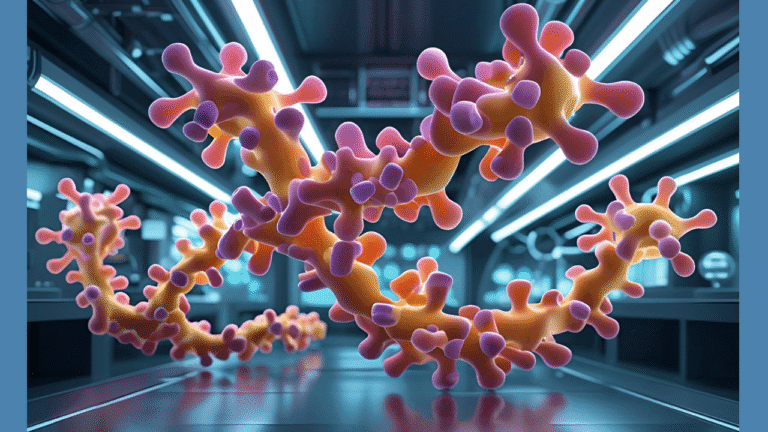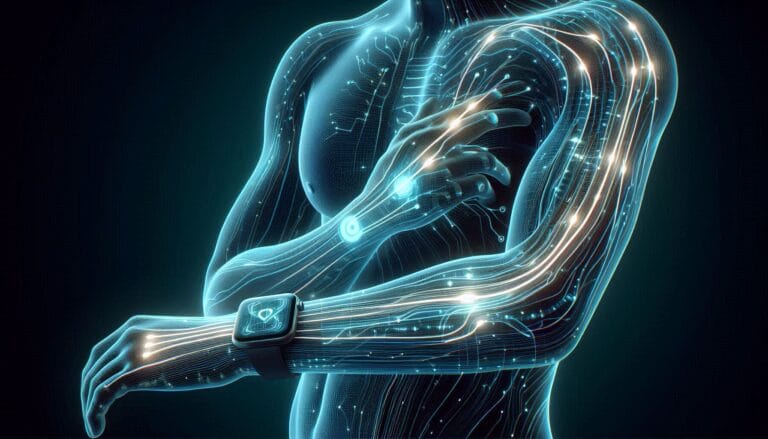Introduction: Robotics in Agriculture
The future of farming and forestry is being reshaped by robotics and artificial intelligence (AI). These cutting-edge technologies are not just revolutionizing how food is grown but are also solving critical challenges such as labor shortages, environmental impact, and food security. From autonomous tractors to LIDAR-equipped drones, robotics in agriculture is enhancing efficiency, improving sustainability, and increasing productivity. This blog explores the various applications, benefits, and future potential of robotics in agriculture and forestry while delving into the use of AI and robotics in this evolving sector.
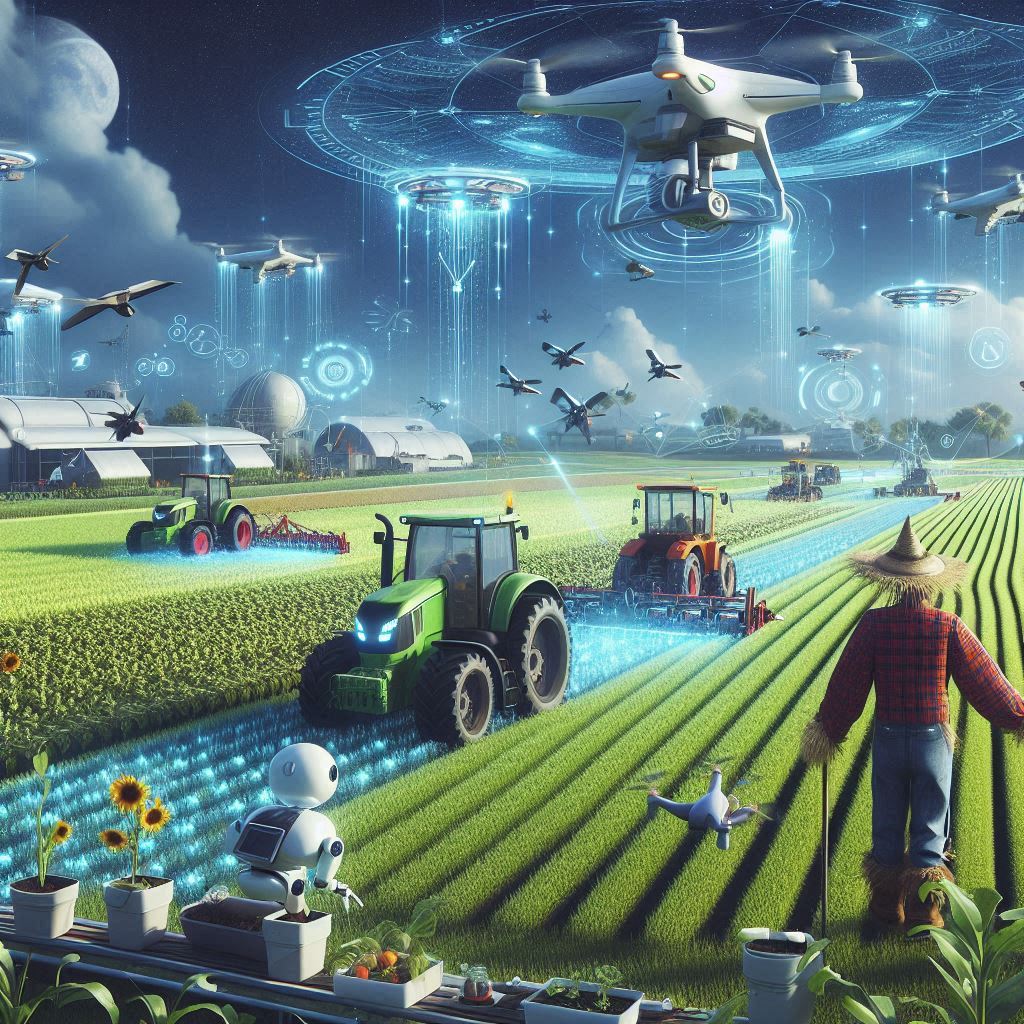
Agriculture is at the forefront of technological advancements, and robotics plays a crucial role in pushing these innovations forward. The use of robotics in agriculture has revolutionized traditional farming techniques, allowing farmers to scale operations, enhance accuracy, and improve yields. Robotics and AI are no longer futuristic concepts but are being implemented today to solve real-world problems like climate change, labor shortages, and the increasing demand for food. Discover how robotics in agriculture and forestryand AI are revolutionizing through innovative applications and advancements. from automated harvesting systems to smart drones and LIDAR technology, and how these technologies can shape the future of farming.
The Use of Robotics in Agriculture
The use of robotics in agriculture has evolved significantly, allowing farmers to automate various labor-intensive tasks, increase productivity, and address modern agricultural challenges. Robotics plays an integral role in mechanizing and optimizing every stage of farming, from planting to harvesting, while also minimizing human intervention. Several advanced agricultural robots, such as AgBot, Ecorobotix, and Harvest CROO, are already in operation and delivering tangible benefits to farmers.
Key Applications of Robotics in Agriculture
Planting and Sowing: Planting and sowing are fundamental tasks in agriculture that traditionally require human labor and precise manual handling. Robotic systems have automated this process by planting seeds with high accuracy, maintaining consistent depth, and ensuring optimal spacing between crops. Robots like AgBot can autonomously sow seeds in straight, uniform rows, improving yields and making the best use of land. These robots can also adapt to different soil types and conditions, thereby reducing seed waste and enhancing productivity.
Some modern planting robots are equipped with sensors that assess soil conditions in real-time, ensuring that seeds are planted in areas with the best chances of germination. Additionally, they can plant multiple crops simultaneously, which further boosts efficiency, especially in large farms. By minimizing errors in seed placement and depth, planting robots significantly increase crop yields while decreasing the need for manual labor.
Harvesting: Harvesting is a complex and labor-intensive process, particularly for delicate crops such as fruits and vegetables, which are prone to damage if handled improperly. Autonomous robots like Harvest CROO, designed specifically for strawberry picking, are equipped with sensors and soft grippers to ensure gentle handling, preventing crop damage. These robots can work around the clock and harvest crops at the optimal time, significantly reducing labor costs.

Furthermore, the use of harvesting robots is expanding to cover a wide variety of crops, including tomatoes, lettuce, and grains. Robots like Agrobot are equipped with AI and computer vision technologies that allow them to identify ripe crops and selectively harvest them. These machines can work faster and more consistently than human workers, thus speeding up the harvesting process and reducing spoilage.
Weeding and Crop Maintenance: Weeds are a major concern in farming, as they compete with crops for essential nutrients and water. Traditionally, farmers have relied on chemical herbicides to control weed growth, but this approach can lead to environmental damage. Robotic weeding systems, such as Ecorobotix, use AI and machine learning to identify weeds and remove them with precision, thereby eliminating the need for chemical treatments. These robots can either uproot the weeds mechanically or apply targeted micro-doses of herbicide directly to the weeds, reducing the overall chemical usage on the farm.
Moreover, weeding robots can operate autonomously in large fields, detecting even the smallest weeds and removing them before they become problematic. This reduces labor costs and environmental impact while promoting more sustainable farming practices.
Precision Spraying: In addition to mechanical weeding, robotic systems are being used for precision spraying of fertilizers and pesticides. These robots, often equipped with GPS and AI systems, can map out the farm and apply chemicals only where needed. By avoiding blanket spraying, farmers can reduce the amount of fertilizer and pesticide used, minimizing waste and lowering costs. Robots like Trimble Ag use sensors to detect plant health and deliver the exact amount of nutrients needed.
This precision spraying also ensures better crop health by delivering nutrients at the right time and in the right quantities, leading to healthier plants and higher yields.
The Environmental Impact of Robotics in Agriculture
One of the key advantages of integrating robotics in agriculture is the ability to address environmental concerns. Traditional farming methods, such as heavy use of fertilizers, pesticides, and herbicides, contribute to soil degradation and water contamination. Robotic systems offer more sustainable solutions by using fewer chemicals, conserving water, and optimizing resource use. For instance, robots equipped with moisture sensors can deliver water precisely where and when it’s needed, reducing water waste in irrigation systems.
Additionally, by minimizing human involvement and the need for large, fuel-consuming machinery, robotics in agriculture also reduce the carbon footprint associated with farming. This shift towards more environmentally responsible practices is critical for addressing climate change and ensuring long-term sustainability in agriculture.
The Economic Benefits of Robotics in Agriculture
The economic impact of robotics in agriculture cannot be overstated. While the initial investment in robotic systems may be high, the long-term savings from reduced labor costs, increased productivity, and improved yields can offset these costs over time. Robotic systems operate 24/7, which allows farms to scale up operations without increasing their workforce. Additionally, the accuracy and efficiency provided by robots reduce waste, further contributing to cost savings.
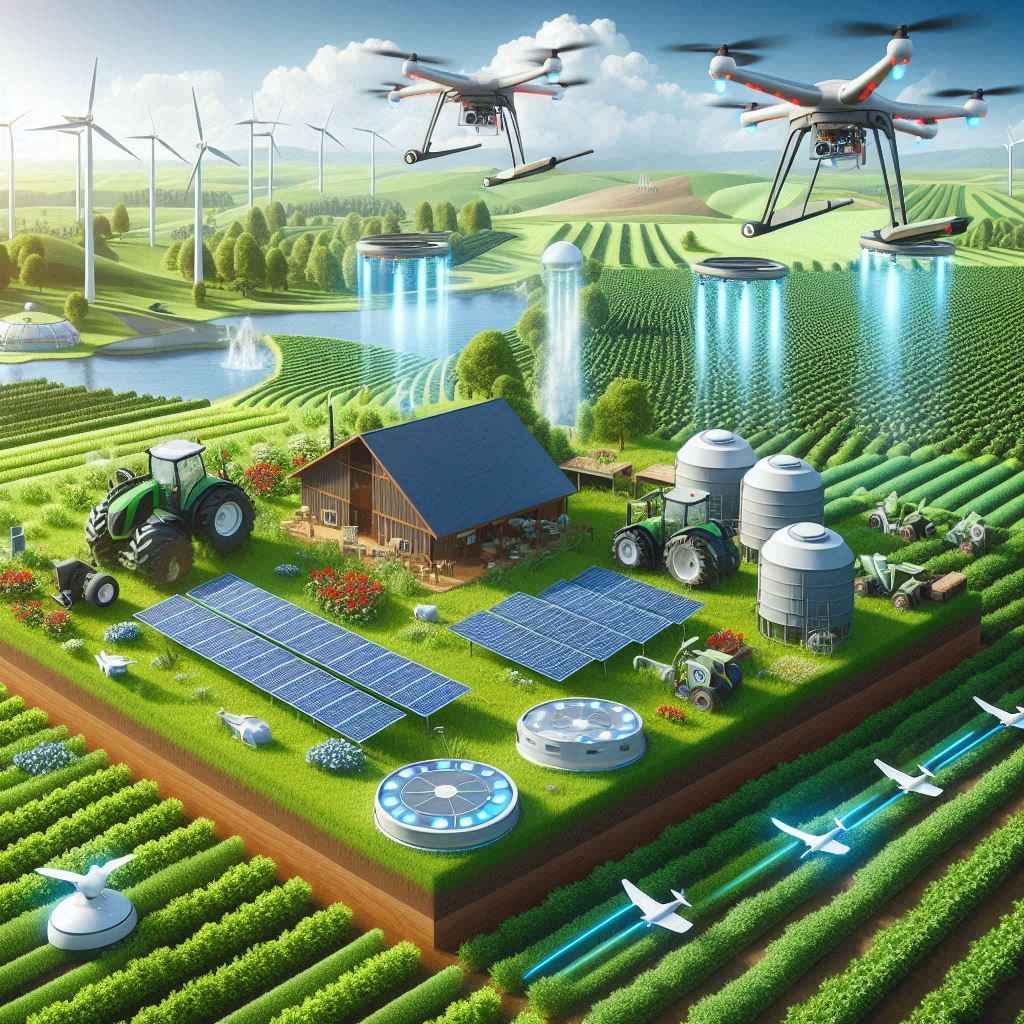
Farmers are also seeing faster returns on investment (ROI) as robots not only enhance productivity but also help mitigate risks associated with crop failure, pest infestations, and environmental changes.
Artificial Intelligence and Robotics in Agriculture
The combination of artificial intelligence robotics in agriculture takes precision farming to the next level. By integrating AI with robotics, farming processes become smarter, faster, and more efficient. AI allows robots to not only execute tasks but also learn from data and adapt to varying environmental conditions.
Key AI-Driven Applications in Agriculture:
- Predictive Analytics: AI systems analyze vast amounts of historical and real-time data, such as weather patterns and soil conditions, to predict crop yields, disease outbreaks, and pest infestations. This enables farmers to take proactive steps and make better-informed decisions.
- Autonomous Harvesting: AI-driven robots utilize advanced machine vision systems to identify and harvest only ripe crops, reducing food waste and improving the overall quality of produce.
- Smart Irrigation: AI controls irrigation systems by analyzing soil moisture levels in real-time, ensuring optimal water use and preventing both over-watering and under-watering.
As AI-driven robotics continue to evolve, their ability to tackle more complex tasks autonomously will further enhance the efficiency and sustainability of farming practices.
Robotics in Agriculture and Forestry
The use of robotics has expanded well beyond traditional agriculture, making significant inroads in forestry as well. Robotics in agriculture and forestry now plays a pivotal role in improving the efficiency and sustainability of forest management and conservation practices. In forestry, where large and often remote areas need to be monitored and managed, robots equipped with advanced technologies like LIDAR, AI, and drone systems offer precise, scalable solutions.
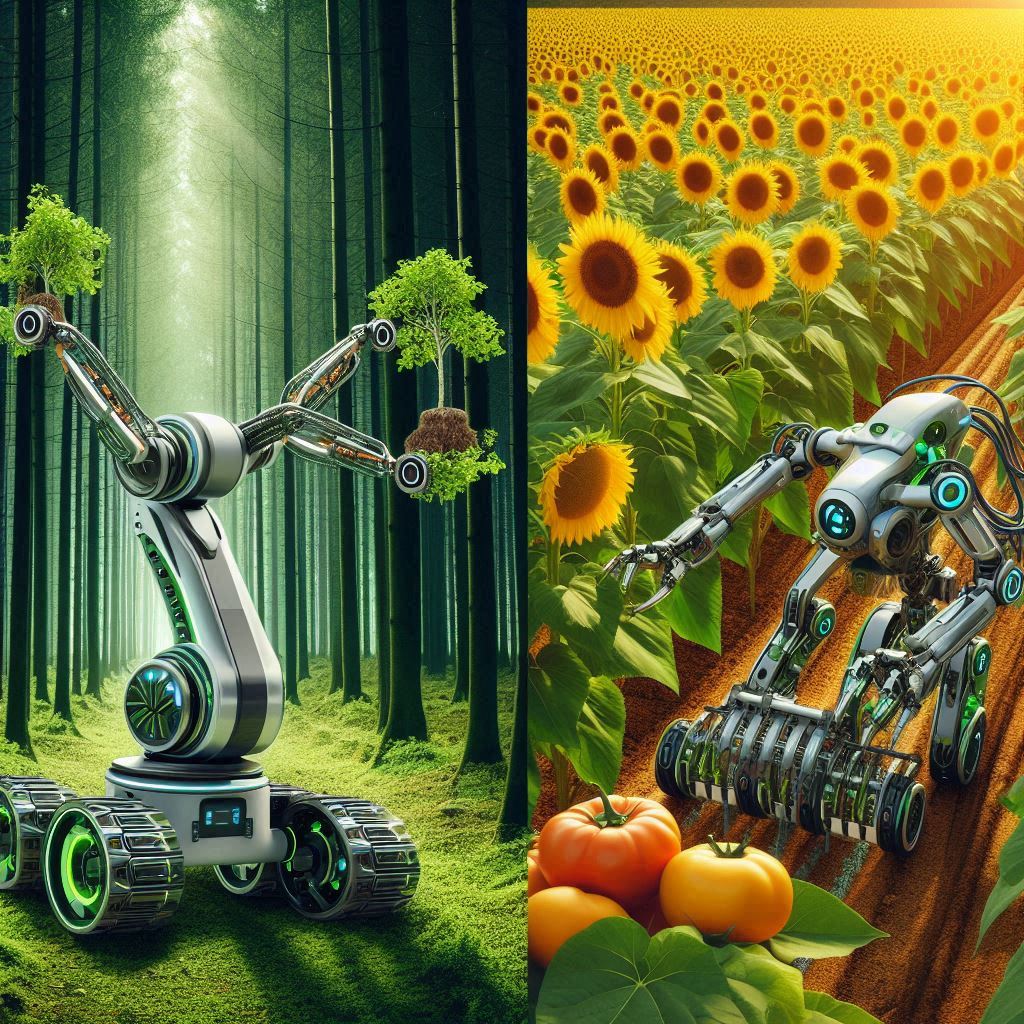
Key Applications of Robotics in Forestry
- Forest Monitoring: Monitoring forest health has traditionally been a time-consuming, manual process that required boots on the ground or aerial surveys using helicopters. However, robotic systems equipped with LIDAR (Light Detection and Ranging) and AI are revolutionizing this process. LIDAR technology, in particular, allows drones to generate 3D models of forest ecosystems by mapping tree growth, tracking biomass changes, and assessing the density of the canopy. The AI component enables these systems to detect anomalies, such as areas affected by disease or invasive species, and send real-time data to forest managers for swift intervention.
In regions prone to illegal logging or environmental degradation, robotic systems can monitor deforestation rates, providing continuous, accurate updates on forest coverage. By automating the monitoring process, forestry managers can gather a wealth of data with minimal disruption to the environment, allowing for more informed decision-making.
- Wildfire Management: With the growing prevalence of wildfires, robotics has become an essential tool for early detection and management. Drones equipped with thermal imaging sensors are used to detect potential wildfire hot spots before they can escalate into uncontrollable fires. This proactive approach enables forest managers to take preemptive action by clearing firebreaks or deploying firefighting teams before disaster strikes.
Additionally, these robotic systems can be deployed during active fires to monitor the spread and intensity of the blaze, helping firefighting crews allocate resources more effectively and ensuring their safety. By mapping areas with the highest risk of ignition, robotics also assist in long-term wildfire prevention.
- Reforestation: Reforestation is a crucial part of combating climate change and restoring ecosystems that have been damaged by deforestation or natural disasters. Traditionally, reforestation efforts rely on manual labor, which is time-consuming and labor-intensive, particularly in remote or inaccessible areas. Robotics offers a solution to this challenge by automating the process of planting trees. Autonomous robots, such as DroneSeed, are capable of planting saplings in areas that humans would find difficult to reach. These drones are equipped with specialized seed pods and can plant hundreds of trees in a single flight.
Robotic reforestation systems are designed to plant trees at an optimal spacing and depth, ensuring higher success rates in germination. By incorporating AI, these robots can assess soil quality and moisture levels in real-time, adjusting planting methods to suit the conditions of each individual site. This results in a faster and more efficient reforestation process, helping to restore ecosystems and promote biodiversity.
- Environmental Monitoring: Robotic systems are also being used in forestry for environmental monitoring, particularly in tracking climate change-related impacts. By continuously collecting data on air quality, temperature, and soil conditions, robots help researchers understand how forest ecosystems are evolving in response to global warming. The data gathered can be used to develop sustainable forestry practices, ensuring that forests continue to act as carbon sinks and protect biodiversity.
Drones with LIDAR: A New Frontier in Environmental Monitoring
The integration of drones with LIDAR systems has become a game changer in precision agriculture and forestry. LIDAR technology uses laser pulses to measure distances and generate highly accurate 3D maps of landscapes, making it an essential tool for monitoring natural environments. When combined with the agility and flexibility of drones, LIDAR offers unparalleled data collection capabilities in previously hard-to-reach or large-scale areas.
Benefits of Drones with LIDAR:
- Precision Mapping: One of the key benefits of LIDAR-equipped drones is their ability to create high-resolution, 3D models of the terrain. This level of precision enables farmers and foresters to manage their land more effectively. For example, in agriculture, LIDAR data can be used to assess soil composition, slope, and elevation, allowing for more precise planting, irrigation, and fertilization. In forestry, drones with LIDAR provide detailed maps of tree density, height, and growth patterns, aiding in forest management and conservation efforts.
- Crop and Forest Monitoring: LIDAR data is invaluable for assessing the health of crops and forests. Drones equipped with LIDAR sensors can detect minute changes in plant growth, enabling early identification of disease, pest infestations, or nutrient deficiencies. By analyzing the data collected, farmers can make informed decisions about pesticide and fertilizer application, improving crop yields and reducing environmental impact.
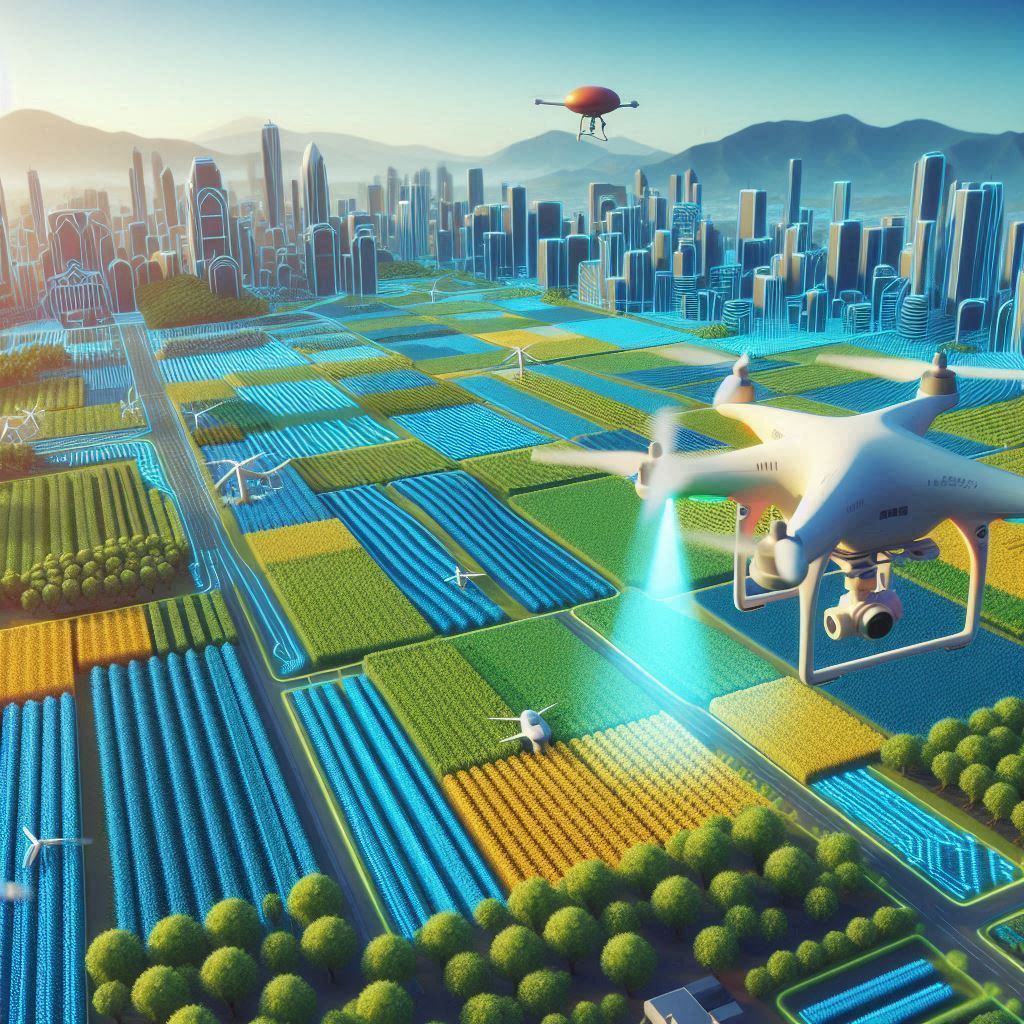
In forestry, LIDAR drones help track forest health by monitoring changes in biomass and canopy cover. This data is crucial for managing carbon sequestration and biodiversity, as well as for planning conservation efforts.
- Environmental Impact Assessment: Drones with LIDAR are also used in environmental monitoring to assess the impacts of climate change, deforestation, and land use changes. For example, LIDAR can monitor coastal erosion, track deforestation rates, and evaluate the effectiveness of conservation projects. The high-resolution data collected by LIDAR drones provides valuable insights for policymakers and environmentalists, helping them develop more effective strategies for mitigating environmental degradation.
5. Robotics Mappers: Turning Data into Actionable Insights
While robots and drones collect massive amounts of data, it is through robotics mappers—specialized software platforms—that this data is transformed into actionable insights. LIDAR, drones, and other sensors create raw data in the form of point clouds, which must be processed and interpreted to be useful. Robotics mappers are essential for this task, as they convert billions of data points into meaningful maps, models, and insights.
Popular Robotics Mappers:
- ArcGIS LIDAR: One of the most widely used platforms, ArcGIS LIDAR, offers powerful tools for terrain analysis and 3D mapping. It is popular in both agriculture and forestry for processing LIDAR data, helping users visualize and analyze the data to make better land management decisions.
- Global Mapper: Known for its versatility, Global Mapper provides robust LIDAR processing capabilities, making it an excellent tool for environmental monitoring, agriculture, and forestry applications. It supports a wide range of file formats and provides advanced visualization tools, helping users quickly interpret complex data sets.
- LAStools: A highly efficient and specialized toolset, LAStools focuses on the rapid processing of large point cloud datasets. It is particularly useful in forestry and land management, where large amounts of data must be processed quickly and accurately to monitor tree growth, biomass, and land use patterns.
Robotics in Agriculture and Forestry: Addressing Global Challenges
Robotics in agriculture and forestry is playing an essential role in addressing some of the most pressing global challenges of the 21st century, from feeding a growing population to combating climate change and managing natural resources more sustainably.
Key Challenges Addressed by Robotics:
- Labor Shortages: One of the major challenges in agriculture today is the shortage of labor, especially in countries with aging populations or declining rural workforces. Robotics helps bridge this gap by automating labor-intensive tasks such as planting, weeding, and harvesting. This not only reduces the reliance on human labor but also ensures consistent performance, reducing the risk of human error.
- Climate Change: Agriculture and forestry are highly susceptible to the impacts of climate change, including rising temperatures, shifting precipitation patterns, and increased frequency of extreme weather events. Robotic systems, equipped with AI and machine learning, can optimize water use, reduce chemical inputs, and monitor soil health, making both industries more resilient to these changes.
- Sustainability: The application of robotics in agriculture and forestry promotes sustainability by reducing waste, conserving resources, and enabling precision farming and forestry practices. For instance, robotic systems that apply fertilizers and pesticides only where needed reduce chemical runoff and improve soil health. Additionally, autonomous reforestation robots play a key role in restoring ecosystems and combating deforestation.
Robotics, AI, and drone technologies are transforming agriculture and forestry by making them more efficient, sustainable, and resilient to future challenges. As the technology continues to evolve, it holds the potential to revolutionize these sectors further, ensuring food security and environmental sustainability for generations to come.
Conclusion
The future of agriculture lies in the hands of robotics and AI. The use of robotics in agriculture and forestry is already showing significant benefits in terms of efficiency, sustainability, and scalability. From autonomous tractors and drones to AI-driven harvesters, the potential for robotics to revolutionize farming is immense.
As these technologies continue to evolve, the role of robotics in agriculture will only grow, helping to meet the challenges of a rapidly expanding global population and the need for sustainable farming practices. Through the integration of AI, LIDAR, and robotics, the future of agriculture and forestry promises to be more productive, sustainable, and efficient than ever before.
By adopting these technologies, farmers and foresters can not only increase their output but also contribute to a more sustainable world. The future of farming is now, and robotics is leading the charge.
Check out our other interesting articles:


